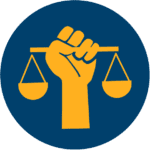Charlie Kestler, one of CCLP’s Policy Fellows, provided testimony in support of Senate Bill 24-211, Adjustments to the Necessary Document Program. CCLP is in support of SB24-211, as it is one of our priority bills.
Recent articles
CCLP testifies in support of protections for DNC drivers
Charles Brennan provided testimony in support of House Bill 24-1129, Protections for Delivery Network Company Drivers. CCLP is in support of HB24-1129.
CCLP testifies in support of TANF grant rule change
CCLP's Emeritus Advisor, Chaer Robert, provided written testimony in support of the CDHS rule on the COLA increase for TANF recipients. If the rule is adopted, the cost of living increase would go into effect on July 1, 2024.
CCLP testifies in support of updating protections for mobile home park residents
Charles Brennan provided testimony in support of House Bill 24-1294, Mobile Homes in Mobile Home Parks. CCLP is in support of HB24-1294.
Daring to imagine a poverty-free Colorado

Imagine if every Coloradan, regardless of race, ethnicity or where they live, had the resources to afford housing, food, clothing, health care and other essentials — while building financial security for the future.
Imagine if quality, affordable health care were available throughout the state, so all Coloradans could receive the care they need and didn’t have to skimp on medications or rely on emergency rooms for basic care.
Imagine if all Coloradans could access the skills training and opportunities they needed to build happy and productive lives.
That is the Colorado we at the Colorado Center on Law and Policy aspire to create day-after-day, month-after-month and year-after-year. We have no illusions that we are anywhere near realizing those dreams. Yet, the vision of a prosperous and inclusive economy that works for everyone serves as our “north star” as we prepare for the 2017 legislative session and beyond.
Since CCLP was established nearly 20 years ago, Colorado has taken some bold steps toward that vision – despite the ebbs and flows of the economy, changes in the political climate and demographic shifts in the state. For example, CCLP was instrumental in establishing a statewide Earned Income Tax Credit, so that hardworking Colorado families could better meet their financial needs. We also took a lead role in expanding Medicaid so that Coloradans who can’t afford health insurance can still get vital health services.
Looking back at the past decade, Colorado has done well across many job-related metrics. According to CCLP’s State of Working Colorado 2016, the state gained nearly 271,000 jobs since 2007 and median household income last year surpassed the pre-recession level — reaching $63,900. But while Colorado has come a long way since the Great Recession, far too many Colorado families still struggle to pay rent or cover their other basic needs. The State of Working Colorado shows that workers throughout the state face wage stagnation, underemployment and race-based income gaps as Colorado’s cost of living surges upward.
Though job growth in Colorado has been impressive, it isn’t keeping up with the state’s population growth. Overall labor force participation is still below pre-recession levels with men ages 25 to 54 in their prime working years most prominently missing from Colorado’s labor force. Too many Coloradans simply don’t have the education or skills they need to participate in the booming economy, leaving them on the sidelines or relegating them to low-wage service jobs to support their families. The median hourly wage has fallen or remained flat since 2010 and more than one in four households in Colorado can’t meet their basic needs without public or private support. Additionally, an estimated 294,000 Coloradans live in “deep poverty,” defined as $5,885 per year for an individual and $10,045 for a family of three last year.
While I’m encouraged that Colorado voters recognized that wages are too low and voted to increase the minimum wage last November, the challenges that so many Coloradans face won’t be resolved by the minimum wage hike alone.
In the year ahead, CCLP will engage workers, employers and policymakers in a dialogue. We’ll discuss giving Coloradans the tools they need to reach their potential so everyone can contribute fully to our economy. We will listen with open minds, work with our coalition partners and develop policies to remove barriers and create opportunities for all Coloradans.
Here are our goals and priorities for the year ahead and beyond:
* We will develop and support policies that encourage Coloradans working toward economic security. For example, CCLP backs renewal of a bill that makes child care more affordable for Colorado’s lowest-wage workers by granting an income tax credit for child care expenses. We support measures that make it easier for those left behind in the economic recovery to get skills training so that they can find jobs that put them on a path to self-sufficiency while strengthening Colorado’s economy. We also favor transparency among private occupational schools so that prospective students know what they’re getting for their investment. We’ll continue to explore how to extend job opportunities for Coloradans with criminal records so they can provide for their families and not be a burden to the state budget.
* We will address factors contributing to rising costs in the health care system. CCLP took a leading role in establishing the Colorado Commission on Affordable Health Care, which made policy recommendations to the legislature and the governor for lowering health care costs in the state. Furthermore, we’ll work on measures to limit co-payments on prescription drugs and require drug-makers to disclose information for what’s potentially driving up the costs of drugs. We’ve joined 108 other organizations – ranging from businesses and hospitals to other advocacy groups – who are imploring Colorado’s Congressional delegation to outline how they plan to provide health coverage for Coloradans who benefitted from the Affordable Care Act before voting to gut that Act. We’ll also support legislation that will reduce the risk of Medicaid recipients losing their health coverage due to inadequate and confusing notification letters.
* We will work with legislators to house the homeless and protect low-income renters from the risk of homelessness by supporting affordable housing efforts and tenant’s rights legislation. We’ll also join with our partners to fight predatory lending practices that put low-income families at risk of losing the assets they worked so hard to acquire when faced with a large unexpected expense.
Mark Twain once famously said “No man’s life, liberty or property are safe while the legislature is in session.” While there is a ring of truth in the great author’s sardonic words, the inverse is also true. Any given legislature can actually improve life, liberty and economic security for their constituents if they set out to do that armed with good research and visionary ideas.
As the General Assembly prepares to convene, we’re hopeful and optimistic the latter scenario will unfold. Regardless, CCLP will continue to forge pathways from poverty — keeping the best imagined future of all Coloradans in mind.
Happy new year.
– Claire Levy





